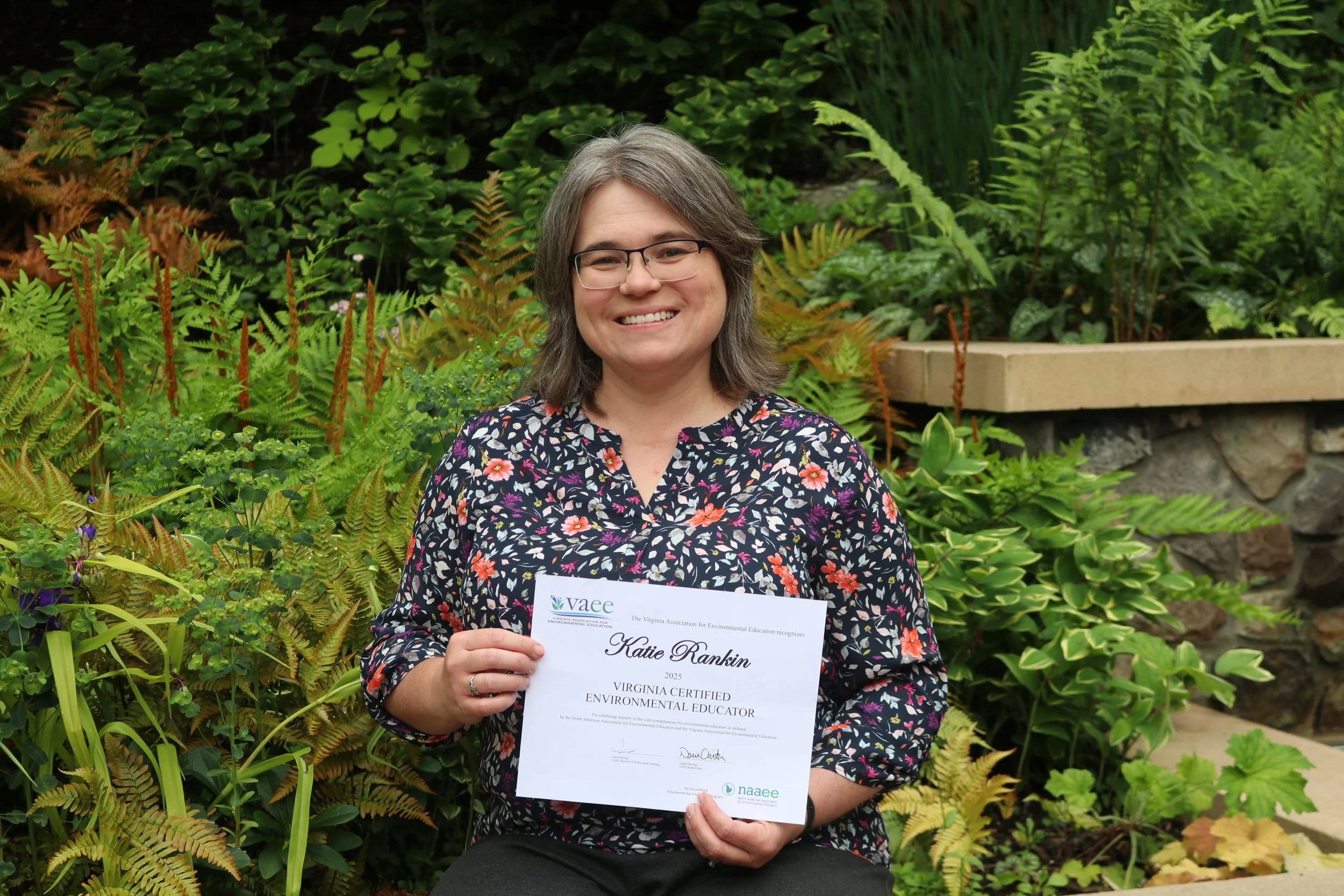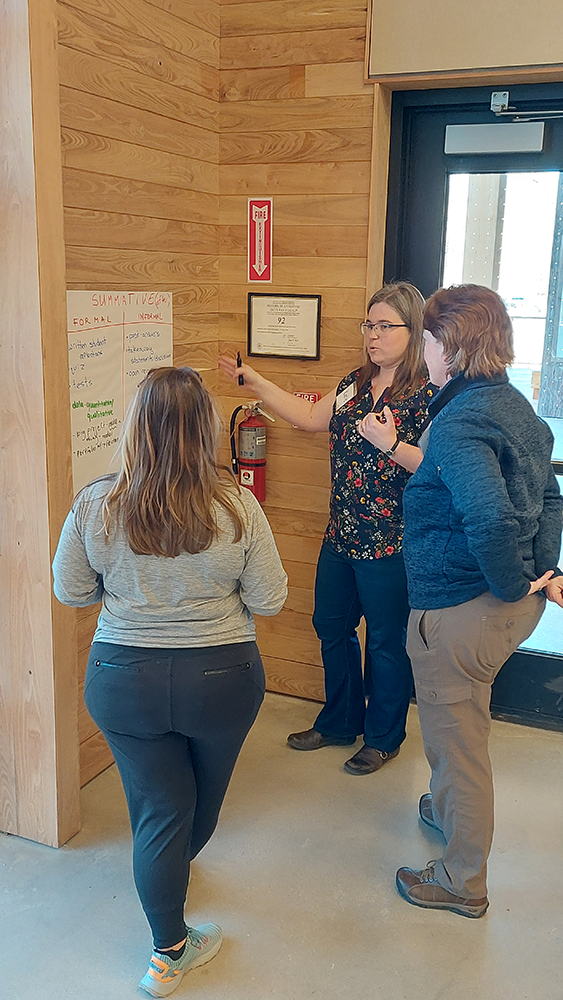Congratulations, Katie Rankin, on becoming a Virginia Certified Environmental Educator
This Spring Katie Rankin became Virginia’s fifth Certified Environmental Educator. Her steady progress through the program had her finishing quickly--within about a year and a half.
Concurrent with her work in the Certification Program, Katie served as the Education Coordinator at the Edith J. Carrier Arboretum at James Madison University—a place that she describes as a “woodland sanctuary” on JMU’s campus. If you are in the Harrisonburg area, you should add this to your list of places to explore. Almost all of their offerings are free and open to the public. At this 125-acre refuge a small staff team and a volunteer team of community members, students, and interns implement environmental education.
Since becoming certified at the end of March, Katie moved into the role of Arboretum Director, “a move made possible through her incredible work ethic, tangible passion for environmental education, and advocacy for all things relating to the Arboretum.”
EJC website
While she worked as the Education Coordinator, Katie guided the education programming. Foremost amongst these offerings are their free guided field trips keyed to the Virginia Standards of Learning (SOLs) for more than 3000 students along with their chaperones and teachers each year. “From engaging nature with one's senses and animal habitats to plant life cycles and seed dispersal, to ecosystem interactions, we are proud to serve as a ‘real world’ place for students to learn,” Katie explains. Environmental education is at its best when it is place-based and engaging with the real thing.
Additional education programming includes the annual fall family festival, training JMU student interns, providing JMU pre-service teachers with workshops such as Project WILD, volunteer opportunities, and the recent addition of watershed education.
We asked Katie what drew her to the Certification Program:
“I trained as a language arts educator years ago and taught middle and high school for a few years before a long stint as a stay-at-home mom. I began to dabble in nature education while homeschooling my kids for a bit, running ‘science club’ for a few friends. The education part of EE was well-known to me; it was the environmental side I wanted to strengthen. I struggle sometimes with feeling like an imposter in EE, so I wanted something to confirm my skills in the field, add to my science knowledge base, and have a credential to show for myself to augment ‘Likes nature’ on my resume. I wanted a confidence-builder. The certification program seemed like a perfect fit for my situation.”
Katie’s Community Partnership Capstone Project brought watershed education on board at the Arboretum.
The Arboretum partnered with Harrisonburg City Public Schools “to develop a pilot watershed education program for the district's 7th grade; around 600 students. Part of the purpose of the project was to experiment with models for future MWEE (Meaningful Watershed Educational Experience) development and building capacity in the school district for that future undertaking.”
Sidenote here:
Katie presented on her project at VAEE’s Annual Conference in 2025. We loved her title: “Starting Somewhere: Laying the Foundation for a Meaningful Watershed Education Experience” which embodied some serious realism in EE. Some undertakings are quite large. EE does big things, and creating opportunities for hands-on experiences that require learners to engage with the real, natural world and apply their critical thinking skills is no small undertaking!
More from Katie:
“The Arboretum is a stormwater management facility among its many other uses, so we wanted to capitalize on the sense of place.” Stations led by a variety of community partners formed the on-site field experience while pre- and post-activities were completed at the schools. “We asked the students to consider human impact on the ecosystem by asking ‘Would it be a good idea to solve our parking problem by draining the arboretum pond and putting a parking lot there instead? Why or why not?’ We took them on a walk through the woods to gather information on 12 different ecosystem factors present in the Arboretum so they could better construct an energy/food web back at school. We modified the Project Wet activity ‘Just Passing Through’ to simulate soil erosion during rain events and see the effects of riparian buffers on sedimentation in streams. We used Lego models and recycled materials to challenge the students to use what they'd learned about pervious surfaces, the effects of plants, rain barrels, and run-off to modify their Lego properties to reduce the amount of run-off produced by a community. And during lunch, the students beaded bracelets to help them understand the Nitrogen cycle. Whew!”
Evaluating to Improve
Katie built in diagnostic, formative, and summative assessment so that the first run of this program would provide them with information to continually improve this problem-based learning experience. Exhibiting the traits of a strong educator who understands that assessment and evaluation build the path for continual improvement, Katie summed up the project this way:
“I'm proud of what we accomplished even while our assessment data and our reflections showed many ways we might do it differently or improve in the future.”









